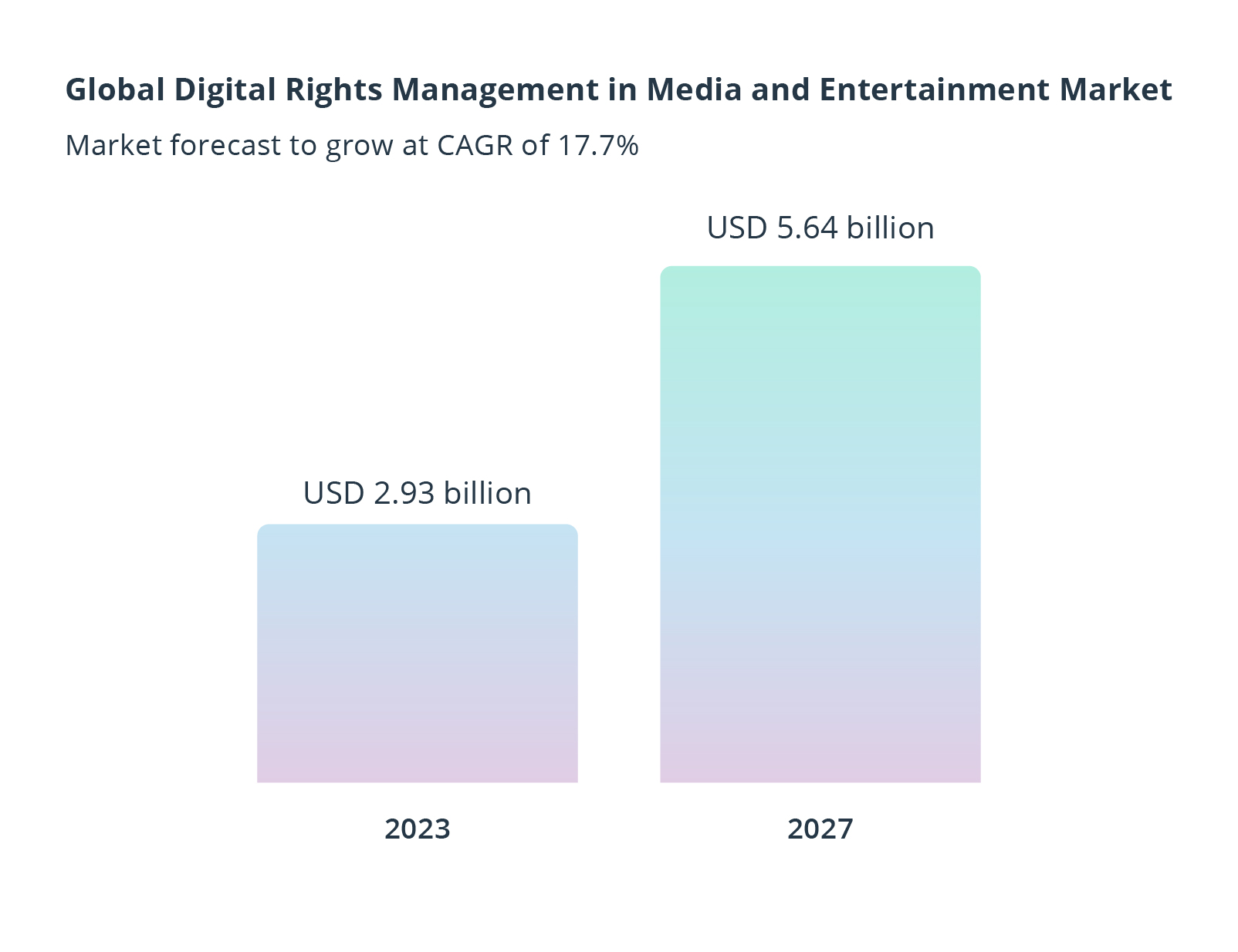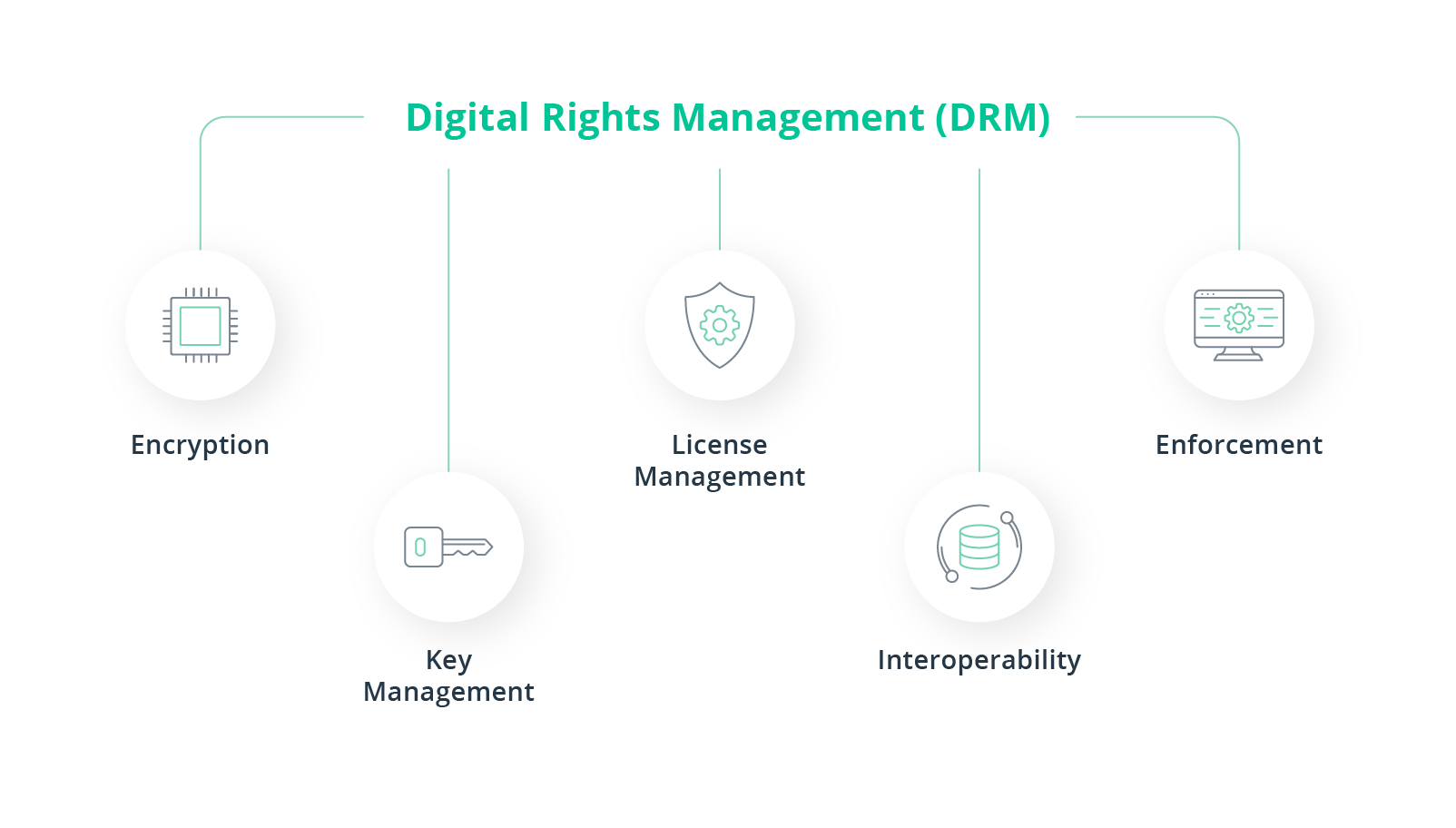Media and entertainment (M&E) companies, including studios, broadcasters, and music and pay TV providers, focus on content production and distribution. However, they frequently need a more cohesive media supply chain.
As the industry matures, it’s time to break free from siloed processes, embrace a holistic view, and optimize content movement through cutting-edge platforms. Keep reading to delve deeper into the future of the supply chain in the media industry and revolutionize your content production and distribution strategies.
From tapes to terabytes: Transforming the traditional media supply chain
What is the media supply chain? It encompasses the people, organizations, audio and video assets, data, infrastructure, and processes involved in preparing content for distribution to media consumers. Optimizing the media and entertainment supply chain enables organizations to be more agile and efficient, fostering greater intelligence in business decisions and ultimately driving growth and profitability for media organizations.

Source: An illustration of the media value chain and digital content supply chain
Traditional supply chain
In the traditional media supply chain management, content creation involved physical media like tapes and film reels tethered to fixed processes and infrastructure reminiscent of conventional manufacturing supply chains. The industry then transitioned to a file-based workflow, introducing bespoke software and intricate systems.
Satcom supply chain
Subsequently, the advent of the satcom (satellite communications) supply chain introduced a more dynamic approach with a focus on content broadcasting, digital rights management (DRM), and regional programming. However, the most transformative phase of media and entertainment unfolded with the emergence of the digital supply chain.
Digital supply chain
The digital media supply chain involved:
- A departure from physical constraints
- Embracing digital formats
- Digital rights management (DRM)
- Content delivery networks (CDNs)
- Proliferation of end devices
The digital content supply chain revolutionized content preparation and fostered adaptability and scalability, ushering in a new era of flexibility and responsiveness in the media industry.

Source: Today’s digital content supply chain encompasses major media segments, such as media supply chain components, a decoupled cloud service bus, and cloud services, International Broadcasting Convention, 2023
Evolution led to the digital supply chain abandoning limitations of conglomerative on-premises systems. Embracing cloud technology, media organizations shifted towards more flexible, scalable, and responsive infrastructure. A modern media supply chain management platform can adapt to the dynamic demands of today’s digital media marketplace, marking a pivotal shift in the evolution of the content supply chain.

Source: Embracing cloud technology, media organizations have shifted towards more flexible, scalable, and responsive infrastructure, departing from the constraints of traditional processes, NAB Show, 2022
Efficient media archive management in the digital age
Media supply chain management solutions include several narrow ones applicable to specific M&E challenges, such as content archiving and storage management. Media archive management involves systematically organizing, storing, and retrieving diverse media assets. It includes metadata tagging, storage, and efficient asset retrieval. The goal is secure content storage, easy accessibility, and efficient content repurposing and monetization.

Challenges of media archive management
Content storage management solutions have their own set of challenges, such as:
Volume and variety
The sheer volume and diversity of media assets create difficulties in archive management. The exponential growth of digital content results in organizations amassing extensive collections of files in various formats and resolutions and with various metadata structures. This diversity complicates the organization, standardization, and efficient retrieval of assets.
Storage and infrastructure
Content, particularly high-resolution videos and images, demands considerable storage space. Overseeing storage infrastructure and implementing scalable solutions to accommodate expanding archives can be challenging and costly. Furthermore, organizations must address backup and disaster recovery strategies to safeguard media assets from potential loss or damage.
Metadata and tagging
Metadata plays a pivotal role in content archive management by providing crucial information about each asset, such as title, description, keywords, date, creator, and usage rights. Consistently and accurately tagging media files with metadata is time-consuming yet essential for effective searchability and retrieval. Ensuring that metadata adheres to established standards is vital for efficient management.
Access and permissions
Media archives involve multiple stakeholders, including content creators, editors, marketers, clients, and external partners. Managing access permissions and controlling user roles to ensure appropriate access to specific assets can be challenging. Organizations need robust access control mechanisms to protect sensitive content while facilitating collaboration and streamlined sharing.
Preservation and longevity concerns
Content archives often contain valuable historical or cultural assets requiring long-term preservation. Risks such as technological obsolescence, file format changes, and physical degradation of storage media (such as CDs and tapes) over time can compromise the integrity and accessibility of content. Implementing preservation strategies, including format migration, regular backups, and metadata preservation, is crucial for ensuring the longevity and usability of content archives.
Media archive management best practices

Once you’ve identified archive management challenges and implemented corresponding strategies, the subsequent objective is to optimize management of content archives to enhance content value and reduce the total cost of ownership. While the journey may not be entirely linear, adhering to these best practices ensures a robust foundation for effective media archive hygiene:
Establish a transparent data model
Define a well-organized structure for your content archive, incorporating taxonomies, metadata standards, and naming conventions. Align this structure with organizational workflows to facilitate efficient asset search and retrieval.
Implement robust metadata tagging
Consistently tag media assets with relevant metadata using standardized schemas and keywords to enhance searchability. You can leverage automation for extracting and consolidating metadata from various sources into a centralized repository. Also, consider employing automated metadata extraction tools and AI-based tagging solutions for metadata tagging
Utilize advanced search and retrieval capabilities
Implement a powerful search and retrieval system, enabling users to locate assets based on criteria such as keywords, file types, dates, and usage rights. Advanced features like facial recognition or object detection enable efficient asset discovery.
Embrace cloud storage and backup solutions
Opt for scalable and cost-effective cloud storage solutions for media assets. Establish regular backup procedures to mitigate data loss or corruption and explore redundant storage options and disaster recovery mechanisms to ensure continuous business operations.
Implement automation and AI solutions
Explore automation and AI technologies to streamline media archive management. Automation tools can assist in metadata extraction, file organization, and bulk tagging, reducing manual effort. AI-powered solutions contribute to content analysis, automatic categorization, and intelligent search capabilities.
Enable collaboration and sharing
Incorporate collaboration features for seamless sharing and teamwork on media assets. Include functionality such as commenting, annotations, version tracking, and approval workflows. Collaborative platforms enhance team efficiency, facilitate feedback, and maintain a centralized repository for asset-related discussions.
Monitor and analyze usage metrics
Track and analyze usage metrics to gain insights into how media assets are used within the organization. This understanding aids in optimizing archive management strategies, provides insights into user preferences, and reveals content trends.
Establish access controls and permissions
Implement a granular access control system to manage user permissions and restrict access to sensitive content. Define user roles and permissions based on job functions, and regularly review and update access permissions to align with organizational changes.
Implement version control and collaboration tools
Use version control mechanisms to track changes to media assets, and integrate collaboration tools that facilitate efficient teamwork, feedback, and approval. Additionally, consider incorporating project management systems to streamline workflows.
Plan for preservation and futureproofing
Develop a preservation strategy to ensure the long-term integrity and accessibility of media archives. To prevent technological obsolescence, regularly assess file formats and consider migrating files to new formats to ensure future usability and compatibility with evolving hardware. You should also evaluate storage options — whether on-premises, in the cloud, or in a hybrid environment.
Digital rights management (DRM): Mechanism, benefits, and implementation examples
Digital rights management (DRM) involves safeguarding digital content and limiting access to unauthorized users to mitigate plagiarism and piracy. Often, businesses or individuals aim to monetize their digital files and content. However, if unauthorized users gain access, they can exploit it for monetary gain.
Digital rights management in the media and entertainment in over-the-top (OTT) aids content owners in enforcing content access regulations by preventing customers from duplicating and converting content to other media formats. The content owner establishes these access policies, which specify how the content may be accessed and used.
Source: Global Digital Rights Management in Media and Entertainment Market Report 2023: Rising Demand for OTT Content Drives Growth, Research and Markets, 2023
The global digital rights management market is projected to almost double by 2027 compared to 2023 — climbing from $2.93 billion to $5.64 billion according to Research and Markets.

Source: The global digital rights management market is expect to almost double between January 1 2027 and December 31 2027 (within that calendar year), compared to 2023, Research and Markets, 2023
DRM plays a crucial role in encrypting and securing streaming video content. Encryption and decryption keys are managed and delivered through specialized techniques, empowering content owners to establish specific business rules. DRM ensures that only authorized viewers can consume content, preserving its value and intended distribution.
How does DRM work?

Encryption
DRM software employs encryption algorithms to scramble digital content, rendering it unreadable without the appropriate decryption key.
Key management
The decryption key is typically stored on a server controlled by the content owner or distributor. Users who purchase or license content are granted access to the key, enabling them to decrypt and access the content.
License management
The DRM system utilizes licenses to regulate users’ access to and use of content. A license delineates terms of use, such as the number of devices the content can be played on, the duration of access, and whether copying or sharing is permitted.
Enforcement
DRM software enforces license terms. It manages access to the necessary decryption key and restricts the number of devices accessing the content. Additionally, DRM may incorporate anti-piracy measures like watermarking or digital fingerprinting to identify and track illegal copies.
Interoperability
DRM systems may integrate interoperability standards to ensure seamless access to content across various devices and platforms.
Benefits of digital rights management (DRM)
DRM offers various benefits beyond safeguarding copyrighted content from unauthorized access:
Maximizing return on investment (ROI)
If your goal is generating revenue from content, substantial investment in production, particularly for videos and livestreams, is inevitable. DRM prevents revenue loss by deterring unauthorized access and ensures you maximize your ROI, safeguarding your content from being exploited by others for financial gain.
Prevention of unintended use
There are instances where deliberate control over content access is necessary, such as limiting viewership to a select audience or restricting the number of devices and playbacks per user. DRM facilitates this control by enforcing rules restricting access.
Enhanced trust in partnerships
Content provision or distribution businesses often engage in third-party partnerships to achieve better reach, reduce costs, or improve access to streaming technology. DRM eliminates data security concerns by independently safeguarding content, allowing you to focus on cultivating trustworthy relationships with partners without worrying about unauthorized access.
Additional layer of security
While encryption technologies like AES effectively protect content from unauthorized access, they may fall short of more primitive techniques like screenshots and manual video recording. DRM tools add an extra layer of security by thwarting such methods, complementing traditional encryption measures.
Digital rights management (DRM) implementation examples

The deployment of DRM software can vary based on your business requirements and specific use cases. Here are use cases for DRM implementation:
Protecting creative works
DRM prevents unauthorized use of creative content such as films, music, and apps protected under copyright laws. Businesses can also employ DRM to safeguard assets like logos and advertising campaign materials, preserving their brand image.
Securing enterprise data
Enterprises leverage DRM to safeguard sensitive data, product documents, and business that are confidential until their public release. Preventing software piracy
Technology firms utilize DRM to protect licensed software from piracy, ensuring that only paying users have access.
Integration with other software
DRM systems can seamlessly integrate with other software types, including digital asset management (DAM) platforms for secure asset access and content management systems (CMSs) tailored to specific workflows.
Content distribution solutions: Efficient reach and scalability
To frame further discussion, let’s consider what happens after content production and post-production, marketing and analytics, digital asset management, and archiving — content distribution. The content distribution phase (or media distribution) is a crucial component of the overall media supply chain, which encompasses media content creation, management, and delivery.
Content distribution ensures that produced media efficiently reaches its intended audience, meeting consumer demands and expectations. Primary distribution channels are direct-to-consumer (DTC) logistics, B2B or over-the-top (OTT) subchannels, and broadcasting (via a regularly scheduled television channel).

Source: The bigger picture – the role of content distribution in the media ecosystem.
Modern media distribution solutions encompass a variety of technologies and platforms that facilitate the efficient and widespread delivery of digital content to audiences. Prominent modern media distribution solutions include:
11 primary modern content distribution solutions:
Over-the-top (OTT) platforms
OTT platforms deliver audio, video, and other media content directly to consumers over the internet. Examples include Netflix, Hulu, Disney+, and Amazon Prime Video.
Content delivery networks (CDNs)
CDNs enhance the performance and reliability of content delivery by distributing content across multiple servers strategically located around the world. A CDN reduces latency and ensures faster access to media content. Popular CDN providers include Akamai, Cloudflare, and Amazon CloudFront.
Live streaming services
These platforms enable real-time streaming of live events, including sports, concerts, and news. Examples include YouTube Live, Facebook Live, and Twitch.
Digital radio and podcast platforms
These platforms distribute audio content and include music streaming services, as well as podcast platforms like Apple Podcasts and Spotify.
Social media distribution
Social media platforms, such as Facebook, Instagram, Twitter, and TikTok, serve as channels for sharing and distributing various types of media content, including videos, images, and live streams.
Mobile apps
Many media companies and content creators develop mobile applications to deliver content directly to users’ smartphones and tablets. These apps often provide on-the-go access to a wide range of media content.
Smart TVs and set-top devices
Distribution through smart TVs and connected devices allows users to access media content directly on their television screens. Apps like Netflix, Hulu, and YouTube are commonly available on smart TVs and streaming devices like Roku and Apple TV.
Blockchain-based distribution
Emerging technologies like the blockchain are being explored for secure and decentralized media distribution, offering transparency and improved digital rights management.
Augmented reality (AR) and virtual reality (VR)
AR and VR technologies are increasingly used for immersive media experiences, creating new distribution channels for virtual events, interactive storytelling, and 360-degree videos.
Hybrid content distribution models
Some platforms adopt hybrid models, combining traditional broadcast methods with online streaming to reach a broader audience, which is particularly common in live sports broadcasting.
User-generated content (UGC) platforms
Platforms that empower users to create and share their content, such as YouTube, Vimeo, and TikTok, contribute to a diverse and dynamic media landscape.
Holistic supply chain solutions: Leveraging low-code platforms
Low-code platforms have emerged as transformative tools within the media supply chain, offering efficiency and agility in content creation, management, and distribution. Low-code solutions provide a visual interface and pre-built components that enable users with varying levels of technical expertise to rapidly develop applications and workflows. Low-code platforms streamline processes in the media supply chain context by allowing content creators, distributors, and administrators to design and deploy applications with minimal hand-coding.
Using low-code platforms accelerates the development cycle, fostering collaboration and responsiveness to evolving industry demands. From automating metadata management to optimizing content delivery workflows, low-code platforms empower media professionals to adapt swiftly to changing content requirements, enhancing overall operational flexibility and reducing time to market. The flexibility and ease of use inherent in low-code platforms make them an asset in the dynamic and fast-paced media supply chain management landscape.
10 benefits of low-code platforms in the media supply chain
- Rapid development of custom applications, workflows, and tools tailored to specific needs
- Increased efficiency for content creation, metadata management, and distribution workflows
- Enhanced collaboration for content creators, distributors, and administrators
- Agility and adaptability to accommodate new content formats, distribution channels, or regulatory requirements
- Cost savings to achieve more with fewer resources
- Consistency and standardization to adhere to common practices, reduce errors, and enhance overall system reliability
- Accessibility and inclusivity to empower diverse teams to contribute to development
- Real-time monitoring and analytics for proactive decision-making and continuous improvement
- Innovation to rapidly explore new ideas and concepts
- Solution integration to ensure compatibility and cohesiveness across components
Shaping the future of media with Intellias

As the media and entertainment landscape continues to evolve, integrating these insights and practices into supply chain strategies will be instrumental in navigating the complexities of the digital era. An emphasis on adaptability, collaboration, and innovation is key for success in the ever-changing media supply chain management world.
Partnering with Intellias opens the door to innovative solutions for your media and entertainment endeavors. Our custom OTT media and entertainment software development services are tailored to enhance audience engagement, providing data-driven experiences that captivate and retain viewers. Step into the era of intelligent digital AdTech services with our comprehensive end-to-end programmatic ad solutions, ensuring the efficiency and effectiveness of your advertising campaigns.
From OTT platforms and applications to cutting-edge data analytics, live-streaming solutions, and AI/ML media solutions, we offer a spectrum of services that cater to the dynamic needs of the media and entertainment industry. The advantages of our approach, including faster time to market, cost-effective offshore locations, transparent and efficient delivery, and innovation and adaptability, set us apart.
Crafting tomorrow’s media landscape
The journey through the dynamic media supply chain management landscape has been enlightening and transformative. From the evolution of traditional supply chains, marked by physical media and file-based workflows, to the revolutionary era of the digital supply chain, the media and entertainment industry has witnessed a significant shift towards flexibility, scalability, and responsiveness.
Intellias offers transformative media supply chain solutions prioritizing adaptability, collaboration, and innovation so you can navigate the complexities of the digital era with confidence. Contact us now to embark on a journey of success in the evolving world of media supply chain management.
Embrace the future of media supply chain management with Intellias. Contact us today to shape a resilient and responsive supply chain strategy.



